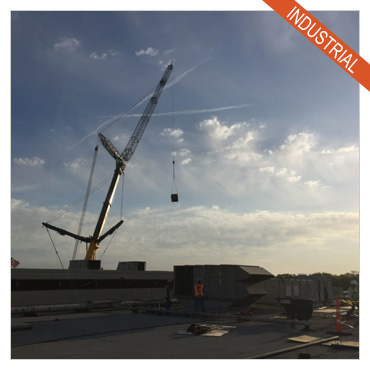|
|
|
FORM + FUNCTION |
 |
A food manufacturer and distributor located in North Texas has sated its need for improved working conditions and operational efficiency after undergoing an HVAC retrofit to replace its well-aged facility equipment. Past its useful service life, most of this equipment was in desperate need of repairs. “Managing disruptions is the biggest challenge when doing construction projects in operating manufacturing facilities,” says Matt Strong, PE, LEED AP, president of C1S Group, the consulting firm that installed the new equipment. “It’s crucial to understand the facility’s use and schedules and how to work within those parameters. This is especially true in manufacturing, where the client’s production schedules can vary or change drastically with little notice.”
|
|
|
|
In generations past, companies and facilities depended on a single, traditional source to generate electricity—normally, a power plant. Today, industrial power comes from distributed energy resources as end-users push to adopt systems and strategies optimizing the safety, efficiency, and reliability of electricity. This distribution of power from multiple sources leverages connectivity, ensuring one outage does not cause irreparable damage to mission-critical systems. It also enables greater energy efficiency and, most importantly, places stronger emphasis on safety, reducing electrical failures caused by significant events like arc flash. As the electricity industry has progressed, switchgear has come to the forefront as the technological innovation most effectively quelling associated safety concerns. What should design professionals know?
|
|
EVENTS
March 16-21
RCI International Convention and Trade Show
RCI
Anaheim, California
rci-online.org
March 22-24
NASCC: The Steel Conference
American Institute of Steel Construction
San Antonio, Texas
www.aisc.org/NASCC
April 4-7
Coverings
Tile of Spain/Ceramics of Italy/TCNA
Orlando, Florida
www.coverings.com
May 24-28
CSC National Conference
Construction Specifications Canada
Kelowna, British Columbia
csc-dcc.ca/Conferences
|
|
|
VIEW LATEST ISSUE

|
|
TOP TRENDING ARTICLES |
In many ways, exterior lighting is an integral aspect of any design; it often has a transformative and dynamic impact on the role a building, landscape, or façade plays in its community. When employed skillfully, an exterior lighting system can amplify architectural creativity without any significant structural consequences. The first step in developing an architectural lighting system is to partner with the right experts to become aware of the vast choices and considerations from sustainability to color range, and from performance to compliance. A lighting design professional must demonstrate the true value of lighting to partner architects, showing how it significantly enhances a design, allowing for improved aesthetics with minimal structural compromises.
|
In-situ load testing is a powerful tool to assess the performance of structures with respect to their ability to carry code-prescribed loads. The practice dates back to the late 1800s and has been used to verify the load rating of structures, as well as the expected performance of structures in retrofit, repair, and strengthening applications. While not always considered the most cost-effective solution (often unjustly), these tests are especially powerful in situations where structures or components may be deemed inadequate to carry the intended loads and are slotted for potentially expensive retrofit or strengthening work.
 READ MORE READ MORE
|
From ashlar and monolithic to brick and parquet, carpet tile installation methods offer varied and numerous design aesthetics. The methodology of carpet tile installation was derived in the mid-19th century at a small company just outside Amsterdam, the Netherlands. The company manufactured the world’s first carpet tile, which has since exploded into the rapidly growing industry of today. However, installation methods are not suggestions solely for aesthetic purposes—they are strategic, technical, and integral ‘rules’ that help ensure the integrity of every modular carpet installation from both design and performance perspectives.
|
|
|
|
|
|

